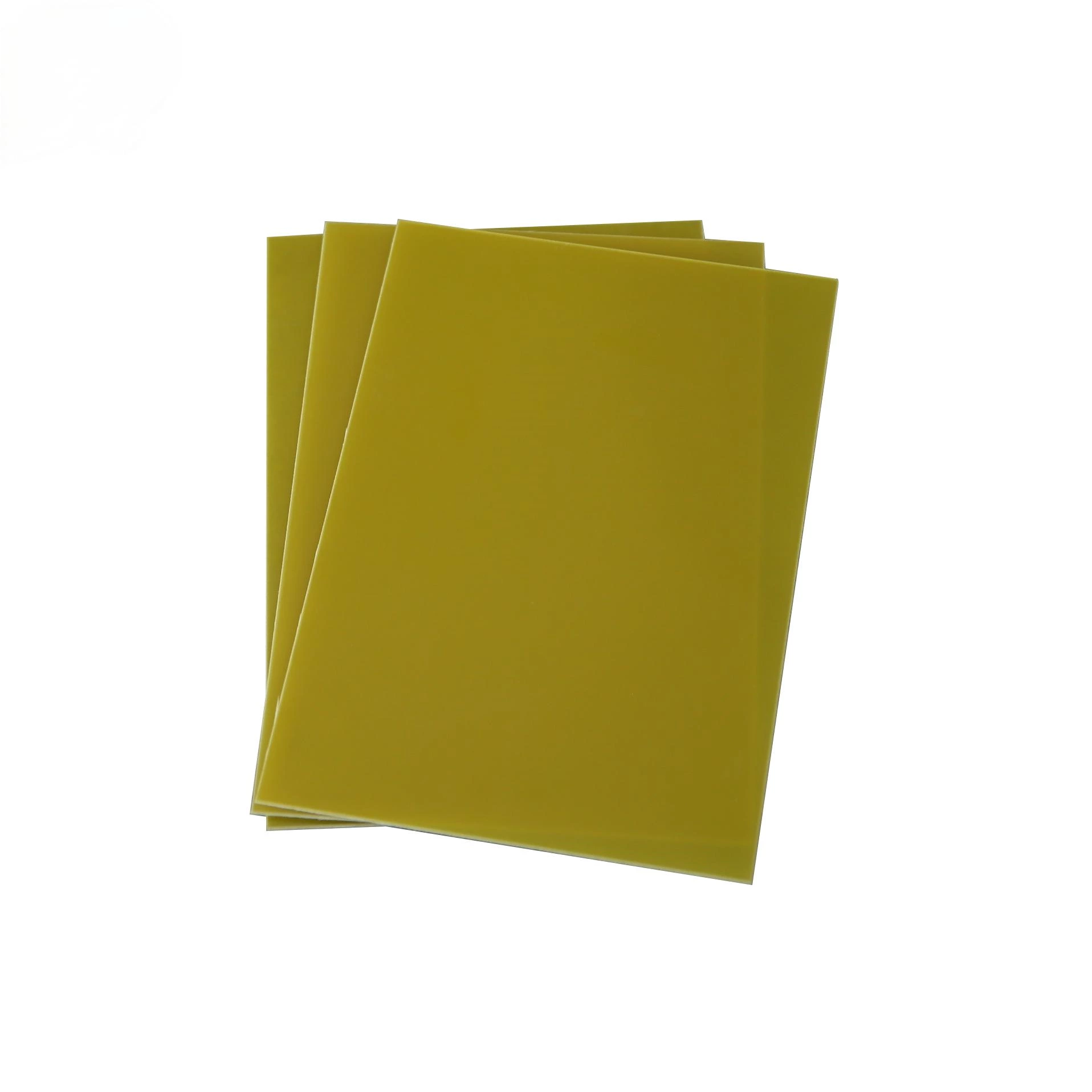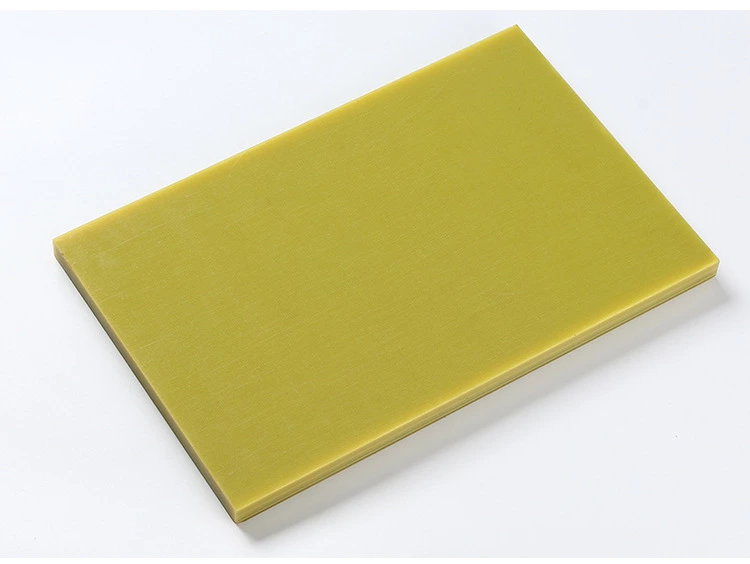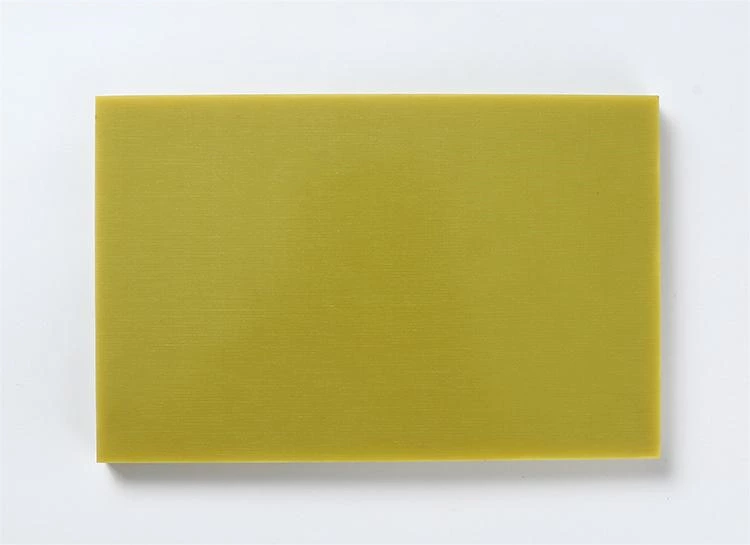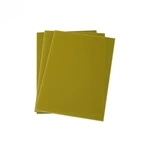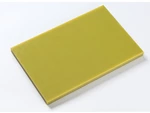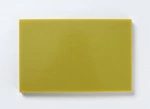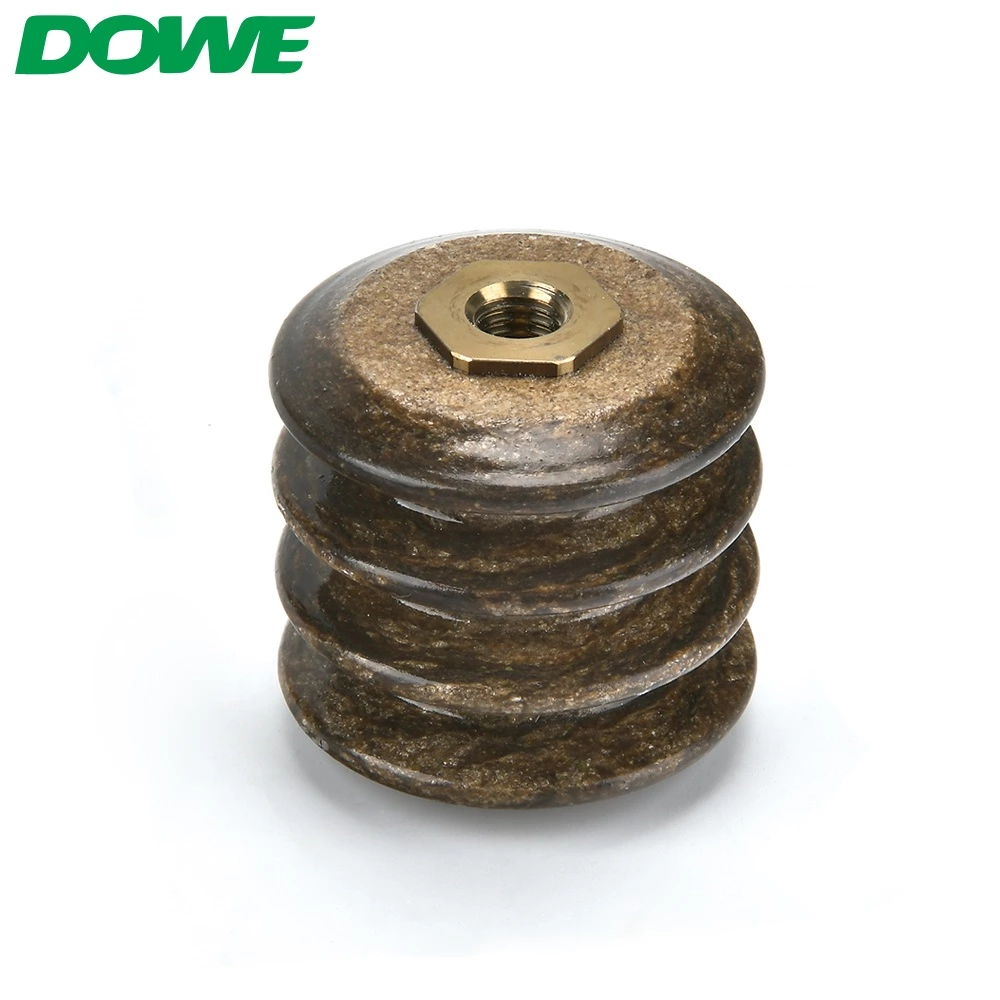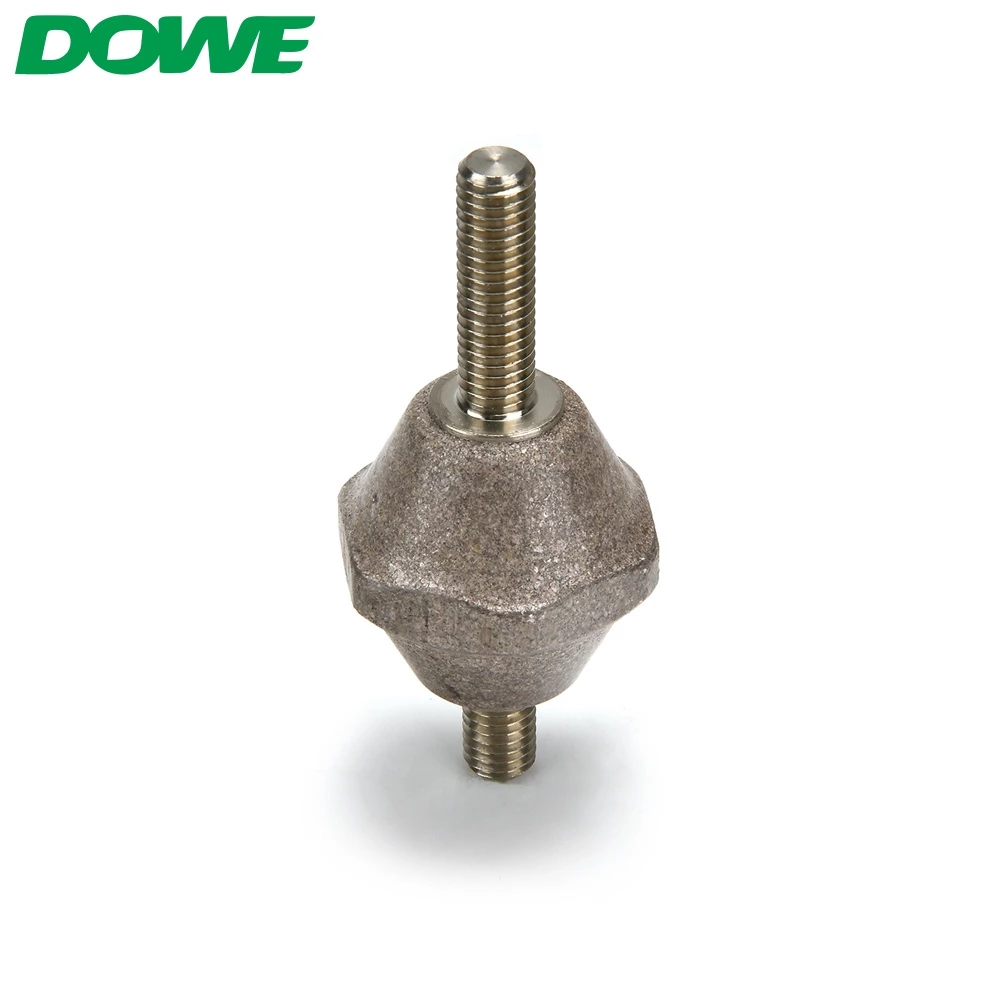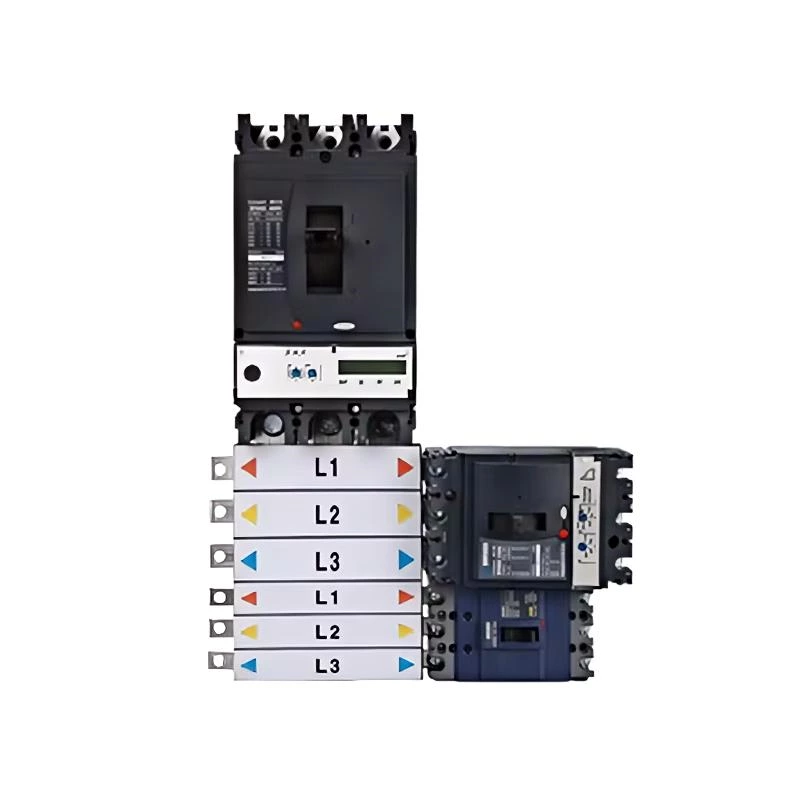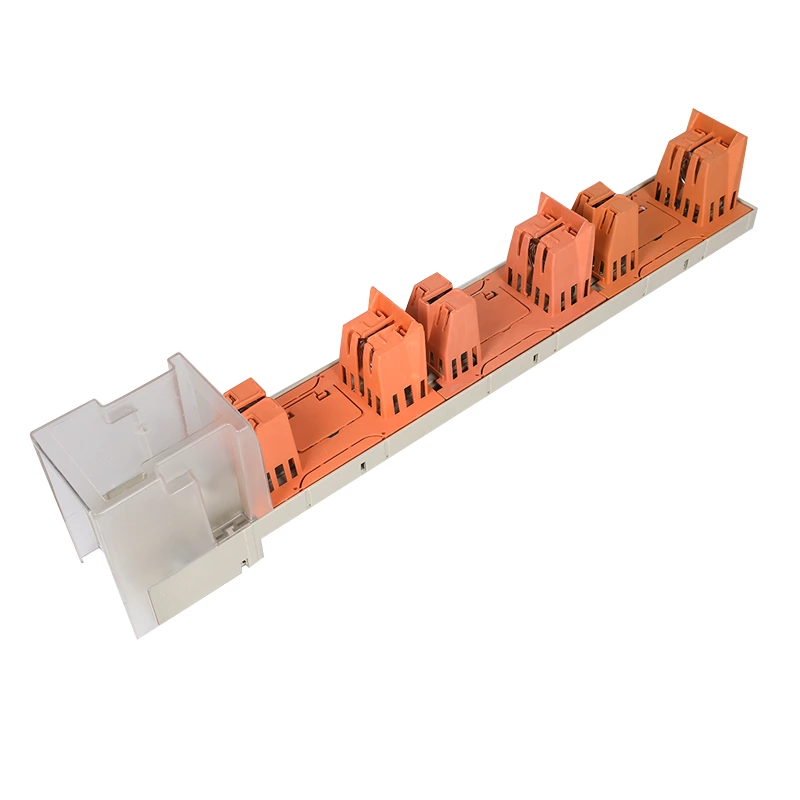DUWAI 3240 Epoxy Insulation Board Class B
The 3240 Epoxy Board is made from epoxy-impregnated fiberglass cloth, featuring reactive epoxy groups in its low molecular weight structure.
Introduction to 3240 Epoxy Board
The 3240 Epoxy Board is made by impregnating electrical-grade fiberglass cloth with epoxy resin, followed by drying and hot pressing. Epoxy resin generally refers to organic polymer compounds containing two or more epoxy groups in the molecule. Except for a few exceptions, their molecular weight is typically low. The molecular structure of epoxy resin is characterized by the presence of reactive epoxy groups within the molecular chain. These epoxy groups can be located at the ends, in the middle, or in a cyclic structure within the molecular chain.
Features of 3240 Epoxy Board
- The surface of the 3240 Epoxy Board should be smooth, free from bubbles, pits, and wrinkles, although other defects that do not affect its use, such as scratches, indentations, stains, and minor spots, are permissible. The edges should be neatly cut, and the end face must not have delamination or cracks.
- Standards: Compliant with GB/T1303.1-1998 (natural color). The red, green, and black colors follow an agreed-upon standard.
- Temperature resistance: Class B. Color: Natural (yellow), red, green, black, etc. (Can be customized and mixed into various colors).
- Characteristics: The cured epoxy resin system exhibits excellent mechanical properties, with high mechanical strength at medium temperatures and good electrical performance stability under high humidity.
- Electrical properties: The cured epoxy resin system is an excellent insulating material with high dielectric properties, surface leakage resistance, and arc resistance.
- Applications: Suitable for use in mechanical, electronic, and electrical fields. It is also used for insulating parts processing, manufacturing various insulation components, and equipment insulation structural parts.
- Thickness: Typically ranges from 0.5 to 50mm. However, thicker boards from 50mm to 150mm can be produced as required.
Technical Parameters of 3240 Epoxy Board
- Appearance: The surface should be smooth, without bubbles, wrinkles, or cracks.
- Nominal thickness and allowable deviation are shown in Table 1.
Table 1
| Nominal thickness | Deviation | Nominal thickness | Deviation |
| 0.4 | ±0.1 | 8.0 | ±0.72 |
| 0.5 | ±0.12 | 10.0 | ±0.82 |
| 0.6 | ±0.13 | 12.0 | ±0.94 |
| 0.8 | ±0.16 | 14.0 | ±1.02 |
| 1.0 | ±0.18 | 16.0 | ±1.12 |
| 1.2 | ±0.20 | 20.0 | ±1.30 |
| 1.6 | ±0.24 | 25.0 | ±1.50 |
| 2.0 | ±0.28 | 30.0 | ±1.70 |
| 2.5 | ±0.33 | 35.0 | ±1.95 |
| 3.0 | ±0.37 | 40.0 | ±2.10 |
| 4.0 | ±0.45 | 45.0 | ±2.30 |
| 5.0 | ±0.52 | 50.0 | ±2.45 |
| 6.0 | ±0.60 | 60.0 | ±2.50 |
| 7.0 | ±0.67 | 80.0 | ±2.80 |
Note:
|
|||
Table 4
| number | Indicator | unit | Numeric | explanation |
| 1 | Vertical Layer Bending Strength | Mpa | ≥340 | - |
| 2 | Parallel Layer Impact Strength (Simply Supported Beam Method) | KJ/ | ≥33 | Meeting the requirements of this standard with either of the two is sufficient. |
| 3 | Parallel Layer Impact Strength (Cantilever Beam Method) | KJ/ | ≥34 | |
| 4 | Vertical Layer Electrical Strength (in Oil at 90℃ ± 2℃) | Mv/m | See Table 5 | - |
| 5 | Parallel Layer Breakdown Voltage (in Oil at 90℃ ± 2℃) | Kv | ≥35 | - |
| 6a | Dielectric Constant (Below 48Hz-62Hz) | - | ≤5.5 | Meeting the requirements of this standard with either of the two is sufficient. |
| 6b | Dielectric Constant (Below 1MHz) | - | ≤5.5 | |
| 7 | Martin Temperature (Longitudinal) | ℃ | ≥200 | |
| 8 | Thermal Stability | ℃ | 200 | |
| 9 | Oil Resistance (in Transformer Oil for 4 hours) | ℃ | 130 | |
| 10 | Tensile Strength (Longitudinal and Transverse) | Mpa | ≥314≥216 | |
| 11 | Adhesive Strength | N | ≥5600 | |
| 12 | Surface Resistivity (Normal Condition and After Water Immersion) | MΩ | ≥1X≥1X | |
| 13 | Volume Resistivity (Normal Condition and After Water Immersion) | MΩ.m | ≥1X≥1X | |
| 14 | Parallel Layer Insulation Resistance (Normal Condition and After Water Immersion) | MΩ | ≥1X≥1X | |
| 15a | Dielectric Loss Factor (Below 48Hz-65Hz) | - | ≤0.04 | Meeting the requirements of this standard with either of the two is sufficient. |
| 15b | Dielectric Loss Factor (Below 1MHz) | - | ≤0.04 | |
| 16 | Insulation Resistance After Water Immersion | Ω | ≥5.0X | |
| 17 | Density | g/ | (1.7-1.9) | |
| 18 | Water Absorption | mg | See Table 6 |
Table 5 Vertical Layer Electrical Strength
| Average Thickness(mm) | Electrical Strength (MV/m) | Average Thickness(mm) | Electrical Strength (MV/m) |
| 0.4 | ≥16.9 | 1.6 | ≥12.7 |
| 0.5 | ≥16.1 | 1.8 | ≥12.2 |
| 0.6 | ≥15.6 | 2.0 | ≥11.8 |
| 0.7 | ≥15.2 | 2.2 | ≥11.4 |
| 0.8 | ≥14.8 | 2.4 | ≥11.1 |
| 0.9 | ≥14.5 | 2.5 | ≥10.9 |
| 1.0 | ≥14.2 | 2.6 | ≥10.8 |
| 1.2 | ≥13.7 | 2.8 | ≥10.5 |
| 1.4 | ≥13.2 | 3.0 | ≥10.2 |
Note:
-
For the electrical strength in vertical layers at 90℃ ± 2℃ in oil, either the 20-second gradual voltage increase test or the 1-minute dielectric strength test can be chosen. Materials meeting the requirements of either test should be considered to comply with the standard for electrical strength in vertical layers at 90℃ ± 2℃ in oil.
-
If the arithmetic mean of the measured sample thickness is between two thicknesses listed in the table, the index value should be obtained by interpolation. If the arithmetic mean thickness is less than 0.4mm, the electrical strength index value should be ≥16.9 MV/m. If the nominal thickness is 3mm and the measured arithmetic mean thickness is greater than 3mm, the electrical strength index value should be ≥10.2 MV/m.
Table 6 Water Absorption
| Average Sample Thickness(mm) | Water Absorption (mg) | Average Sample Thickness(mm) | Water Absorption (mg) |
| 0.4 | ≤17 | 5 | ≤25 |
| 0.5 | ≤17 | 6 | ≤27 |
| 0.6 | ≤17 | 8 | ≤31 |
| 0.8 | ≤18 | 10 | ≤34 |
| 1.0 | ≤18 | 12 | ≤38 |
| 1.2 | ≤18 | 14 | ≤41 |
| 1.6 | ≤19 | 16 | ≤46 |
| 2.0 | ≤20 | 20 | ≤52 |
| 2.5 | ≤21 | 25 | ≤61 |
| 3 | ≤22 | Single-Sided Machined to 22.5 | ≤73 |
| 4 | ≤23 |
Note:
- If the arithmetic mean of the measured sample thickness is between two thicknesses listed in the table, the index value should be obtained by interpolation.
- If the arithmetic mean thickness is less than 0.4mm, the index value should be ≤17 mg. If the nominal thickness is 25mm and the measured arithmetic mean thickness is greater than 25mm, the index value should be ≤61 mg. For boards with a nominal thickness greater than 25mm, they should be single-sided machined to 22.5mm, and the machined surface should be relatively smooth.
3240 Epoxy Board is made by impregnating alkali-free glass fiber cloth with epoxy phenolic resin, followed by baking and hot pressing.
3240 Epoxy Board has high mechanical and dielectric properties, good heat resistance and moisture resistance, and excellent machinability. Its heat resistance class is B.
3240 Epoxy Board is suitable for use in electric motors and electrical equipment as insulating structural components and can be used in humid environments and transformer oil.
3240 Epoxy Board, with its high mechanical and electrical performance, is widely used as an insulating material and component in generators, motors, and electronic devices. It is also highly suitable for use in transformer oil environments and humid conditions.
- The reaction between epoxy resin and the curing agent occurs through either direct addition reaction or ring-opening polymerization of the epoxy groups in the resin molecules, without releasing water or other volatile byproducts. Compared to unsaturated polyester resins and phenolic resins, they exhibit very low shrinkage (less than 2%) during curing.

